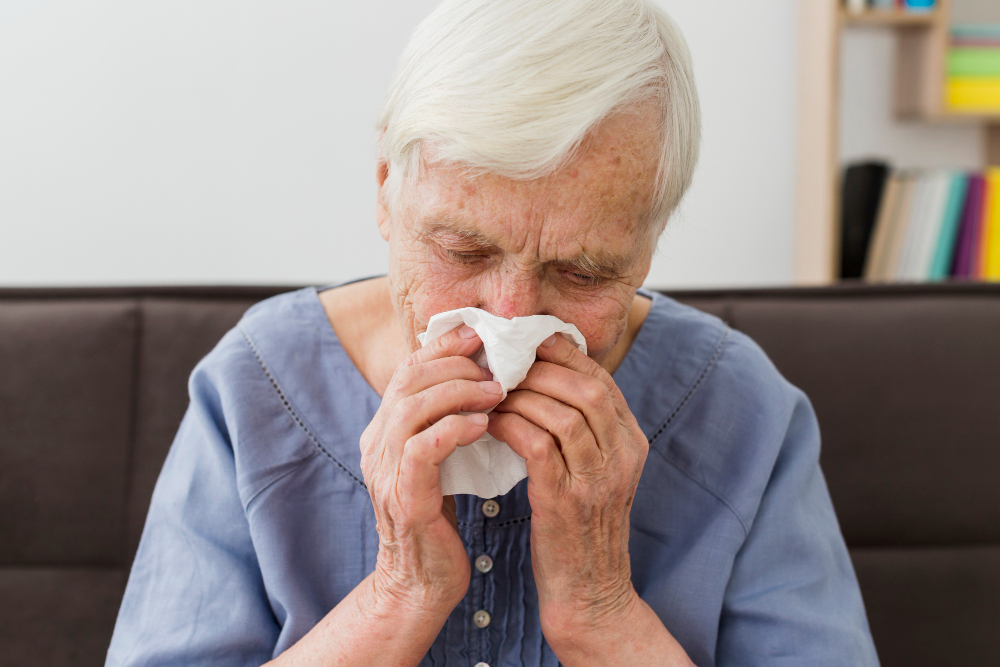First Aid for Epistaxis (Nosebleeds)
Epistaxis, commonly known as a nosebleed, is a common condition that can range from mild to severe. While nosebleeds are usually not a sign of a serious health issue, they can still be alarming and need to be treated promptly to prevent excessive blood loss and discomfort. Understanding the appropriate first aid steps can help manage a nosebleed effectively and reduce anxiety for both the patient and caregiver.
At Devoted Helpers in Sugar Land, Texas, we provide compassionate care for individuals dealing with a variety of medical needs, including first aid training. In this article, we’ll guide you through the essential steps of first aid for epistaxis to help you handle a nosebleed safely and efficiently.
What Causes Nosebleeds?
Before we delve into first aid, it’s essential to know the potential causes of nosebleeds. Some common causes include…
- Dry air – This is one of the most frequent causes, particularly during winter when indoor heating can dry out nasal passages.
- Allergies – Allergies can lead to irritation and inflammation in the nose, which may result in bleeding.
- Nasal injury – A blow to the nose or frequent nose picking can lead to a nosebleed.
- Underlying health conditions – Blood clotting disorders or the use of blood-thinning medications can increase the likelihood of nosebleeds.
- Environmental factors – Smoking, exposure to irritants, or excessive use of nasal decongestants can contribute to nosebleeds.
Step-by-Step First Aid for Epistaxis
If you or someone else experiences a nosebleed, it’s essential to act calmly and promptly. Here’s a step-by-step guide to first aid for epistaxis…
Stay Calm and Reassure the Person
First and foremost, try to remain calm and reassure the person experiencing the nosebleed. Most nosebleeds are not life-threatening and can be managed effectively with proper care. Anxiety and panic can make the situation worse, so staying composed is key.
Sit Upright, Do Not Lie Down
Encourage the person to sit up straight, rather than lying down. Sitting upright prevents blood from flowing down the back of the throat, which can cause choking or vomiting. It also reduces pressure in the blood vessels of the nose, helping to control the bleeding.
- Avoid tilting the head back – Tilting the head backward can cause blood to drain into the throat, which may lead to swallowing or inhaling blood.
Pinch the Nostrils Together
Using your thumb and index finger, pinch the soft part of the nose just below the nasal bridge. Keep the nostrils tightly closed for about 5 to 10 minutes. This action helps apply pressure to the bleeding vessels inside the nose and can often stop the bleeding.
- Breathing – While pinching the nostrils, the person should breathe through their mouth.
- Keep pressure steady – Avoid releasing the pressure too soon, as it may cause the bleeding to resume.
Apply a Cold Compress
Applying a cold compress to the nose or back of the neck can help constrict blood vessels and reduce blood flow to the nose. This can be helpful in controlling the bleeding.
- Cold pack – Use an ice pack or a bag of frozen peas wrapped in a cloth. Apply it gently to the nose or the back of the neck for 10 to 15 minutes.
Avoid Blowing the Nose
After the bleeding stops, remind the person not to blow their nose for several hours. Blowing the nose can disrupt any clotting that has occurred and trigger the bleeding again.
Keep the Person Comfortable and Hydrated
While the person rests, ensure that they are comfortable and hydrated. Encourage them to drink fluids to keep their body well-hydrated, which helps prevent further nosebleeds.
Aftercare and Prevention
Once the nosebleed stops, you can use some additional measures to help prevent future episodes…
- Humidify the air – Consider using a humidifier in the room to add moisture to the air, especially during dry seasons.
- Use a saline nasal spray – This helps to keep the nasal passages moist.
- Avoid irritants – Keep the person away from smoke, strong odors, or allergens that could trigger a nosebleed.
When to Seek Medical Attention
Most nosebleeds can be managed at home, but there are situations where medical attention is necessary. Call for emergency help or visit a healthcare provider if…
- The bleeding lasts longer than 20 minutes despite applying pressure.
- The person has a history of bleeding disorders or is on blood-thinning medications.
- The nosebleed occurred after a significant injury, such as a blow to the head.
- The person feels weak, dizzy, or faint during or after the nosebleed.
- There is heavy bleeding or the bleeding is coming from both nostrils.
While nosebleeds can be alarming, they are usually not a cause for concern and can be managed effectively with prompt and proper first aid. By following the steps outlined above, you can provide relief and control the bleeding safely. However, if a nosebleed is severe, prolonged, or caused by an underlying medical issue, it’s important to seek medical attention as soon as possible.
At Devoted Helpers in Sugar Land, Texas, we prioritize the well-being and comfort of our clients, including providing assistance with medical emergencies such as nosebleeds. If you or a loved one needs guidance on managing health conditions or receiving personalized home care services, don’t hesitate to reach out. Our team is here to provide support, information, and compassionate care every step of the way.


